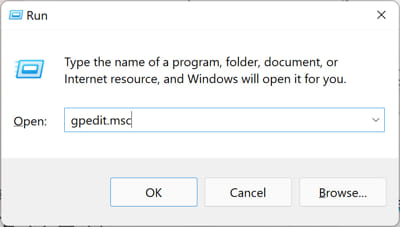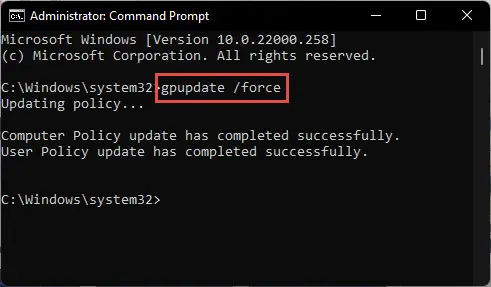When connected to a remote computer on a Windows computer using the Remote Desktop (MSTSC) connection, users are often required to copy and paste data to and from the local (host) computer.
Although Windows allows users to move their data to and from the host and remote computer, such as files, folders, copy and paste text by default, users have reported it doesn’t occasionally work.
If you are experiencing a similar problem, let this guide help you in fixing it so that you can continue with the actual task at hand.
Table of Contents
What is Clipboard (rdpclip.exe)
Clipboard is a location where the copied data is temporarily stored for you to use when you paste it. Windows uses this clipboard to store your copied content, may it e files, folders, or plain text, and is stored on your RAM.
Rdpclip.exe is a valid Windows process responsible for sharing that clipboard between your host computer and the remote computer when an RDP session is established.

This process often causes problems and doesn’t allow you to copy and paste items from a remote computer. Let us now show you how to fix this problem.
Fix Copy and Paste (Clipboard) Not Working in Remote Desktop Connection
The Remote Desktop tool in Windows allows you to manage how your session is established. You can control what policies to use, what to allow and disallow, during that connection. One of these settings lets you control whether to allow data to move between the host and the remote PC. If this option is disabled, you will not be able to copy and paste the items.
Another reason (which we have already discussed above) is the malfunctioning of the rdpclip.exe process.
The sections below discuss how to fix each of these problems.
Enable Clipboard Sharing
However, the option is enabled by default. Perform the following steps to enable the shared clipboard, so that you can copy and paste items to and from the remote computer in a Remote Desktop session:
- Open the Remote Desktop Connection tool by typing in MSTSC in the Run dialog box.

- From the RDC tool, click Show more options.

- Now switch to the “Local Resources” tab and then check the box next to Clipboard under the “Local devices and resources” section.

- Now return to the General tab and enter the IP address or the name of the computer you want to connect to, the username to connect with. Then click Connect.

- In the popup, enter the password for the user account and click Ok.

You will now be connected to a remote computer via RDC. You should now be able to copy any content on either computer (remote or host) and then paste it on the other computer.
If you are still unable to do so, resort to the next solution given below.
Restart rdpclip.exe
A problem with the process responsible for the shared clipboard can lead to you not being able to move any data to and from a remote computer. Here is how to fix the problem:
- Open the Task Manager using the CTRL + Shift + Esc shortcut keys and switch to the Details tab.
- Here, look for the process “rdpclip.exe.”

- Right-click on the rdpclip.exe process and then click End task from the context menu.

- In the confirmation box, click End process.

- Now click File from the top menu and then click Run new task.

- In the “Create new task” box, paste the following and click OK.
rdpclip.exe
Now retry to copy and paste content between the host and the remote computer, which should now work.
You can also run the following script in Windows PowerShell to automate the process above:
(Get-WmiObject -Query "select * from Win32_Process where name='RDPClip.exe'"|?{$_.GetOwner().User -eq $ENV:USERNAME}).Terminate()
rdpclip.exe
How to Connect Local Partitions to Remote Desktop
To move data between local and remote computers in a Remote Desktop Connection, you can mount your local partitions to the remote computer using the RDC tool. Here is how:
- Open the Remote Desktop Connection tool by typing in MSTSC in the Run dialog box.

- From the RDC tool, click Show more options.

- Now switch to the “Local Resources” tab and then click More under the “Local devices and resources” section.

- From the pop-up window, expand Drives, and then check the boxes next to the partition you wish to mount. Once done, click OK.

- Now return to the General tab and enter the IP address or the name of the computer you want to connect to and the username to connect with. Then click Connect.

- You will now see a warning dialog box. Click Connect.

- In the popup, enter the password for the user account and click OK.

You will now be connected to a remote computer. You can see that the selected partition has been mounted in the File Explorer.

How to Disable Copy and Paste in Remote Desktop Connection
Windows allows you to control whether you want to allow or disable data sharing in a remote connection using the Group Policy as well as through Windows Registry.
These policies can also be preventing you from copy/pasting content to and from the remote computer in a Remote Desktop Connection.
Disable Copy and Paste via RDC using Group Policy
Note: If you are using the Home edition of Windows, then you will not have the Group Policy Editor enabled by default. Learn how to enable it in Windows 11 or Windows 10.
- Open the Group Policy Editor by typing in gpedit.msc in the Run dialog box.

- Navigate to the following from the left pane:
Computer Configuration >> Administrative Templates >> Windows Components >> Remote Desktop Services >> Remote Desktop Session Host >> Device and Resource Redirection - Double-click on “Do not allow Clipboard redirection” in the right pane. From the popup, select the Enabled Radio button, then click Apply and Ok.

- Now repeat the last step for the “Do now allow drive redirection” policy.
- Once done, launch the Command Prompt as an administrator and paste the following cmdlet to implement the changes.
gpupdate /force
You will now no longer be able to move any data to and from the host machine and the remote computer.
If you want to enable it, then select the Disabled radio button in the 2 policies we have changed in the steps above.
Disable Copy and Paste via RDC from Windows Registry
Note: Misconfiguration of critical values in the system’s registry could be fatal for your operating system. Therefore, we insist that you create a system restore point before proceeding forward with the process.
- Open the Registry Editor by typing in regedit in the Run dialog box.

- Now paste the following into the address bar at the top for quick navigation:
Computer\HKEY_LOCAL_MACHINE\SOFTWARE\Microsoft\Terminal Server Client
- Right-click on the “Terminal Server Client” Key in the left pane, expand New, and then click DWORD (32-bit) Value.

- Name this new DWORD “DisableClipboardRedirection.”
- Repeat step 3 from above and name this DWORD “DisableDriveRedirection.”
- Double-click both of these DWORDs one after the other and set their Value Data to 1.

- Now restart your computer for the changes to take effect.
You will now no longer be able to move any data to and from the host machine and remote computer. Alternatively, you can run the two cmdlets below one by one in Run or PowerShell to automatically create and configure these DWORDs for you:
reg add “HKEY_LOCAL_MACHINE\Software\Microsoft\Terminal Server” / v “DisableClipboardRedirection” / t REG_DWORD / d 1 / f
reg add “HKEY_LOCAL_MACHINE\Software\Microsoft\Terminal Server” / v “DisableDriveRedirection” / t REG_DWORD / d 1 / fHowever, if you wish to reinstate the feature, simply delete the 2 DWORDs we have created above and reboot the PC.

Closing Words
Remote Desktop Connection is a handy tool, especially for system administrators. Not only does it offer various settings and policies, but you can also run it from the Command Line and configure your settings right from there.
If you have recently shifted to Windows 11, learn how to enable RDC in Windows 11.





